

The wavelength distribution of sunlight is relatively flat, indicating that sunlight contains an approximateequal intensity of each wavelength across the spectrum. Such a light is called white light. The wavelength distribution for light emmitted by conventional light bulbs, called tungsten for the filament type is much more intense at long wavelenths than at short wavelengths as shown in the figure.
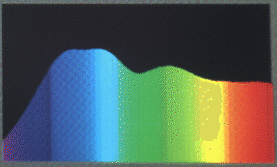


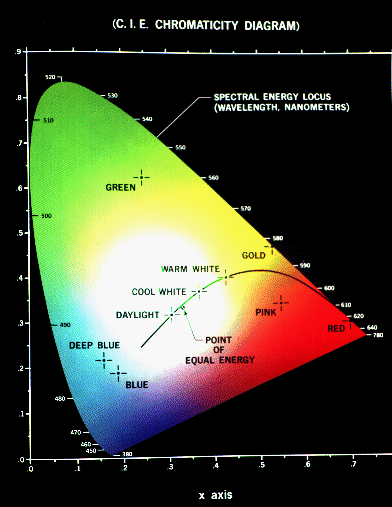
In the mid 1940's it was determined that color needed to be added to the existing monochrome video signal. The first step in this undertaking was to analyze and quantify the properties of the human perception. The Committee International d~Eclarge (CIE) was established to define an "average" human observer.
The average human eye is most sensitive to green/yellow light and least sensitive to reds or blues.
It was determined that the monochrome resolution of the eye is musch greater than the color resolution. As details becomes very small, all the eye can discern is changes in brightness. Beyond a certain level of detail, color cannot be distinguished, and the human eye, in effect, becomes color blind.
There are two parameters of color: saturation (how much color) and hue/tine (which shade of color)
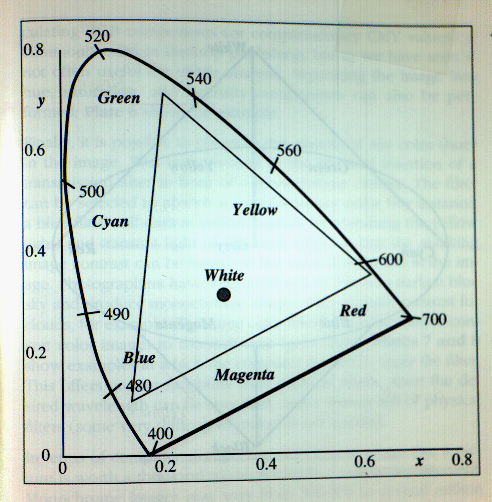
As two properties are extremelly subjective, the CIE tested thousands of subjects using a light comparison apparatus in order to define a "standard observer". The results are shown here, and are called "CIE color space". In this diagram the point labeled C is defined as standard pure white. The distance away from C represents saturation, and the position around the diagram represents hue(tint). Any point not actually on the solid outerline but within the area enclosed by the curve represents a mixture of colors. Pure spectrum colors are defined as being on the solid outer line.
The RGB color model is composed of the primary colors Red, Green, and Blue. This system defines the color model that is used in most color CRT monitors and color raster graphics. They are considered the "additive primaries" since the colors are added together to produce the desired color. The RGB model uses the cartesian coordinate system as shown in Figure XX. Notice the diagonal from (0,0,0) black to (1,1,1) white which represents the grey-scale.
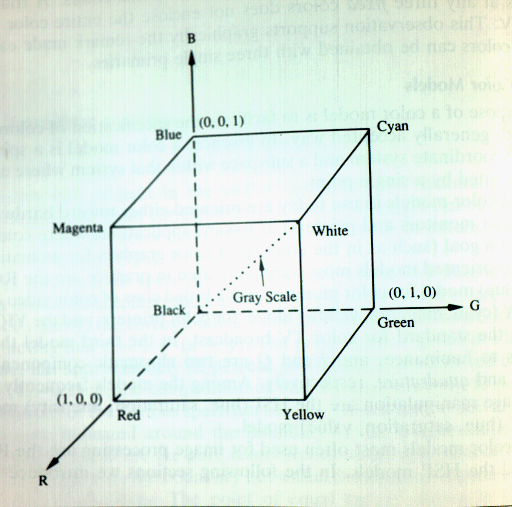
Here is a view of the RGB color model looking down the gray scale line.
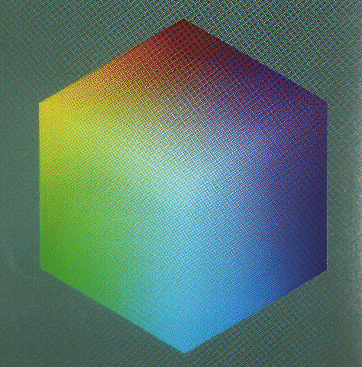
The CMY color model stands for Cyan, Magenta and Yellow which are the complements of red, green and blue respectively. This system is used primary for printing. The CMY colors are called the "subtractive primaries" since the color specified is obtained from by what is removed from white light not added.
Paper is coated with cyan ink which absorbs the red light, therefore cyan is white - red or blue+green. Similarly Magenta is White-Green or Red+Blue and Yellow is White-Blue or Red+Green
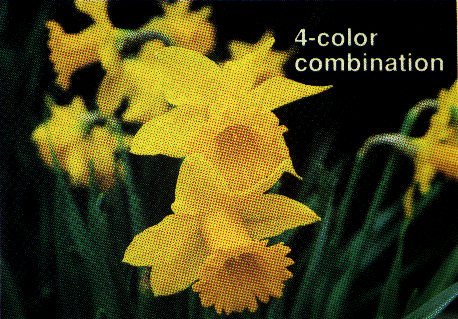
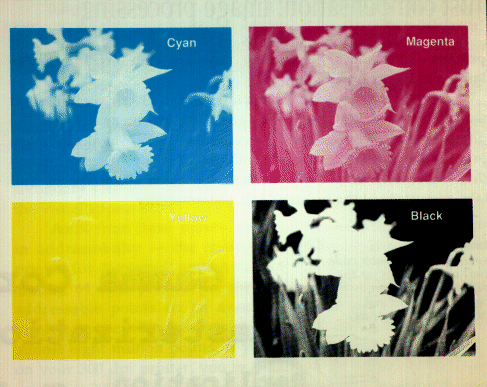
To convert between RGB and YIQ the following matrix should be used
The HSV Color Model stands for the Hue, Saturation, and Value based on the artists (Tint, Shade, and Tone).
The coordinate system in a hexacone
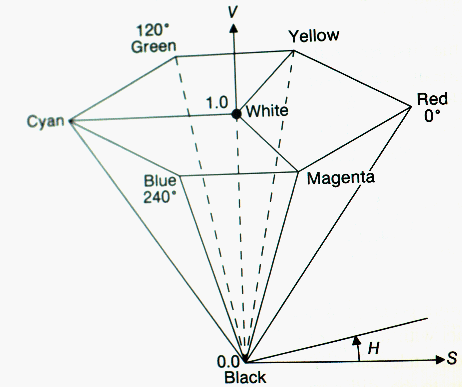
Here is a view of the HSV color model from the side. The axis has been rotated 180 degrees so that the magenta is pointing to the left.

The HLS color model stands for hue, lightness and saturation
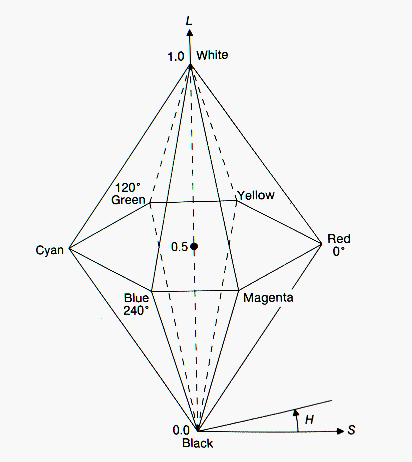
Here is a cross section view of the HLS Color model.
